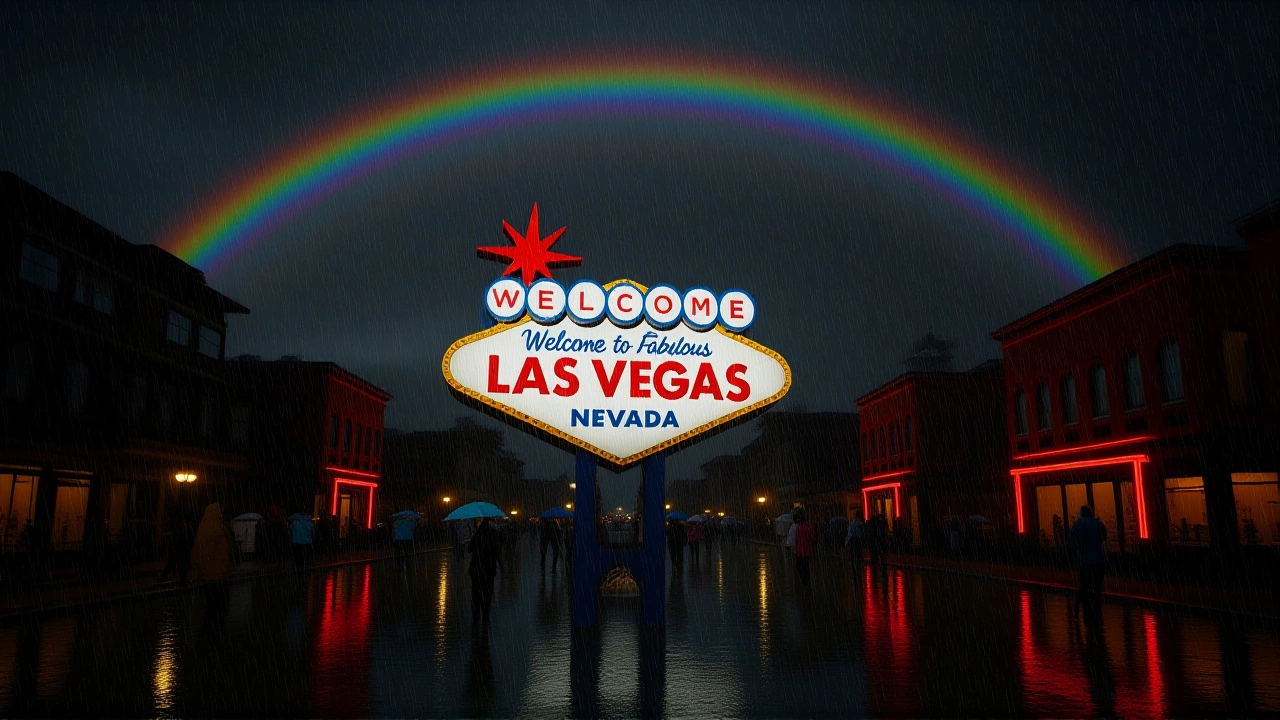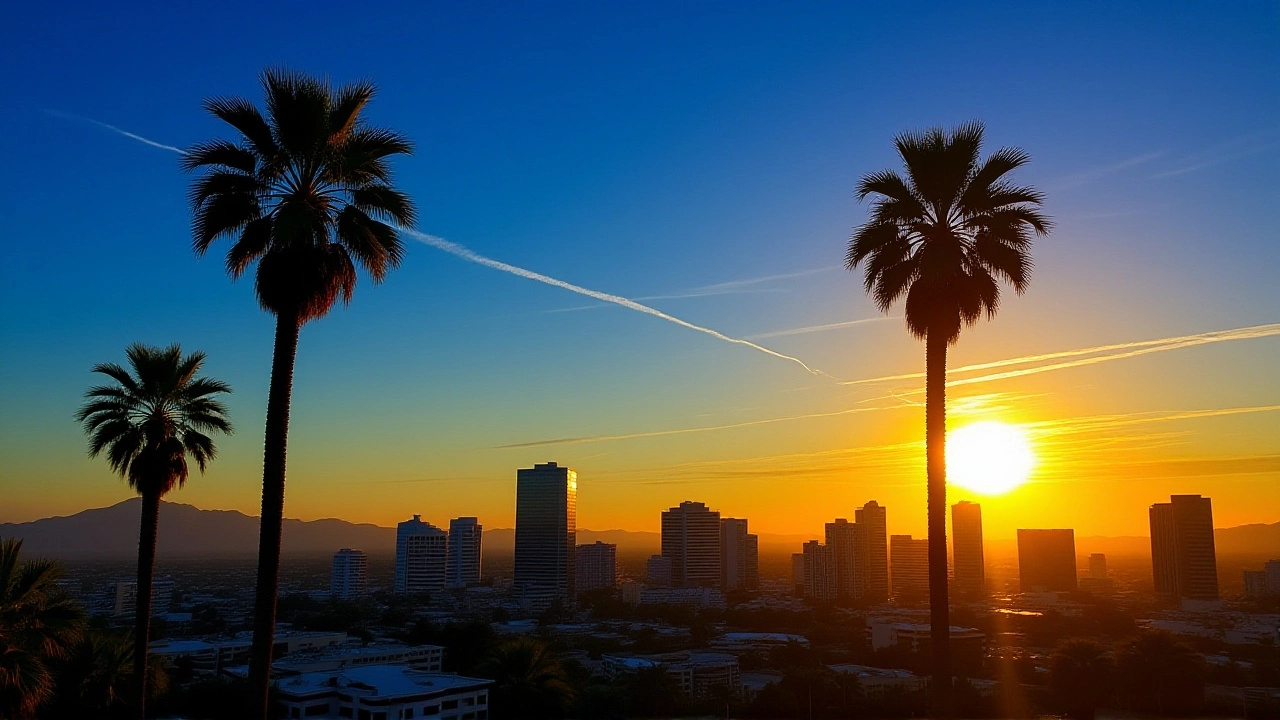By the end of this week, Las Vegas will feel more like early December than late November, with daytime highs expected to dip to just 58°F (14.4°C)—a sharp drop from the 84°F peaks seen just days ago. The sudden chill, forecast by EaseWeather.com and corroborated by AccuWeather and Weather25.com, comes as the city transitions into its annual November cooldown, but this year’s plunge is notably more dramatic. With nighttime lows projected to fall near 40°F, residents and visitors alike are being urged to dig out their winter jackets—not because of snow, but because of the desert’s infamous temperature swings.
Why This Cold Snap Feels So Unexpected
November in Las Vegas usually means crisp mornings and sunny afternoons, not sweater weather by 3 p.m. Historical averages from the University of East Anglia’s CRU, the Met Office, and the Netherlands Meteorological Institute show typical November highs around 68°F. But this year? The city’s thermometer is set to fall nearly 10 degrees below that norm by November 30. What’s unusual isn’t the cooling trend—it’s the speed and depth of it. On November 26, highs were still in the mid-70s. Now, just four days later, it’s a 16-degree plunge.
"It’s not rare for Las Vegas to get chilly in late November," says meteorologist Dr. Lena Ruiz, who tracks desert climate patterns for the Nevada Climate Initiative. "But when you go from 84°F to 58°F in under a week, people forget how quickly the desert loses heat. That’s not climate change—that’s just desert physics. The air dries out, clouds vanish, and the ground gives back every bit of warmth it absorbed."
What Travelers and Locals Need to Know
For tourists, this isn’t just a weather update—it’s a wardrobe emergency. LasVegas-Ticket.com’s 2025 travel guide warns: "Layer up: light shirts for the day, a warm jacket for nights. Temperatures drop quickly after sunset." That’s not hyperbole. Sunset on November 30 will be at 4:26 p.m., and by 7 p.m., the temperature could already be below 45°F. Even if you’re heading to a rooftop bar or the Las Vegas Strip for evening entertainment, a light coat won’t cut it. The UV index remains at a moderate 33, so sunscreen is still advised—but so is a thermal layer.
AccuWeather’s data shows the city’s average November low is 52°F, but the forecast for the final weekend suggests lows near 38°F—close to freezing. That’s rare for the valley floor. The Las Vegas Valley sits at about 2,000 feet, and without cloud cover to trap heat, the ground radiates warmth like a stone left in the sun all day—and then suddenly, it’s cold.

Why This Matters for Health and Daily Life
For older adults, people with respiratory conditions, and those without consistent heating, this rapid shift can be dangerous. Emergency room visits for hypothermia and asthma flare-ups spike during sudden desert cold snaps, even when temperatures don’t drop below freezing. The Nevada Department of Health and Human Services issued a public advisory on November 22 reminding residents to check on elderly neighbors, ensure heating systems are working, and avoid prolonged outdoor exposure after dusk.
"We don’t get snow, but we get cold in a way that sneaks up on you," says nurse Maria Delgado at University Medical Center in Las Vegas. "People come in saying, ‘I didn’t think it would be this cold.’ They’re wearing jeans and a hoodie. That’s not enough. The desert doesn’t care what you think—it just drops."
The Bigger Picture: Desert Climate Patterns
Las Vegas averages just 11mm of rain in November—about half an inch—and 8 hours of sunshine daily, according to Weather2Travel.com. That means clear skies, low humidity, and rapid heat loss. The city’s desert climate has always swung between extremes: 110°F in July, 58°F in November. But what’s changing is how abruptly the shift happens. In the 1990s, a 25-degree drop over five days was unusual. Now, it’s becoming the norm.
"It’s not global warming causing this cold snap," clarifies Dr. Ruiz. "It’s the natural rhythm of the Mojave. But climate change is making the hot days hotter and the cold nights colder, because the atmosphere is holding less moisture to buffer the swings. We’re not seeing more cold weather—we’re seeing more extreme cold after extreme heat."

What’s Next?
By December 1, temperatures are expected to rebound slightly—back to the 60s—but the pattern is clear: Las Vegas is entering its coldest stretch of the year. The Las Vegas Grand Prix ended on November 16, so no major events are competing for attention. That means the real story is quieter—but no less important. Families are stocking up on blankets. Homeless outreach teams are distributing extra jackets. And everyone who’s lived here long enough is saying the same thing: "Don’t be fooled by the sunshine."
Frequently Asked Questions
Is 58°F unusually cold for Las Vegas in late November?
Yes—while November averages around 56–68°F during the day, a 58°F high is below the typical late-month norm, especially after highs of 84°F just days prior. Nighttime lows near 38°F are also colder than the 43°F average, making this a significant dip within the seasonal pattern.
Why do temperatures drop so fast after sunset in Las Vegas?
The desert has very low humidity and minimal cloud cover, so heat escapes rapidly once the sun sets. The ground, which absorbed intense daytime heat, radiates it back into the atmosphere without insulation. That’s why 58°F by day can feel like 40°F by 8 p.m.—even with clear skies.
Should I be concerned about health risks from this cold snap?
Absolutely. Sudden temperature drops increase risks for hypothermia, asthma, and cardiovascular stress, especially among the elderly and those without reliable heating. The Nevada Health Department advises checking on vulnerable neighbors, keeping indoor temps above 65°F, and avoiding prolonged exposure after dark.
How does this compare to previous years?
In 2023, Las Vegas hit 62°F on November 30. In 2021, it dropped to 54°F. This year’s 58°F is within historical variation but stands out because of the rapid drop from 84°F. Climate scientists note that extreme swings like this are becoming more frequent as atmospheric moisture decreases.
What should I pack if I’m visiting Las Vegas this weekend?
Bring thermal layers, a windproof jacket, gloves, and a hat—even if you’re only out for dinner. Daytime is mild, but after sunset, it’s winter. Sandals and t-shirts won’t cut it. The UV index is still moderate, so sunscreen is wise, but warmth is non-negotiable.
Is this cold spell related to climate change?
Not directly—it’s part of normal desert variability. But climate change is amplifying temperature extremes overall: hotter highs and colder lows. Less moisture in the air means less buffering, so when the cold arrives, it hits harder and faster than it used to.







